【Queen of Thrones A Brazzers XXX Parody】
Twelve Illustrated Dust Jackets
Arts & Culture

From the collection of Martin Salisbury. Photograph: Simon Pask
We’ve all been told told not to judge a book by its cover, but what about judging a decade, an artistic moment, or a society? In his latest collection, The Illustrated Dust Jacket: 1920–1970, illustration professor Martin Salisbury traces the history of the book jacket from its origins as a simple dust guard for expensive bound books to its evolution as a promotional tool meant to catch the eye. The middle of the twentieth century marked a high point for the medium, as the period’s leading illustrators brought contemporary visual styles into readers’ hands. A selection of these covers, in chronological order, appears below along with Salisbury’s captions.
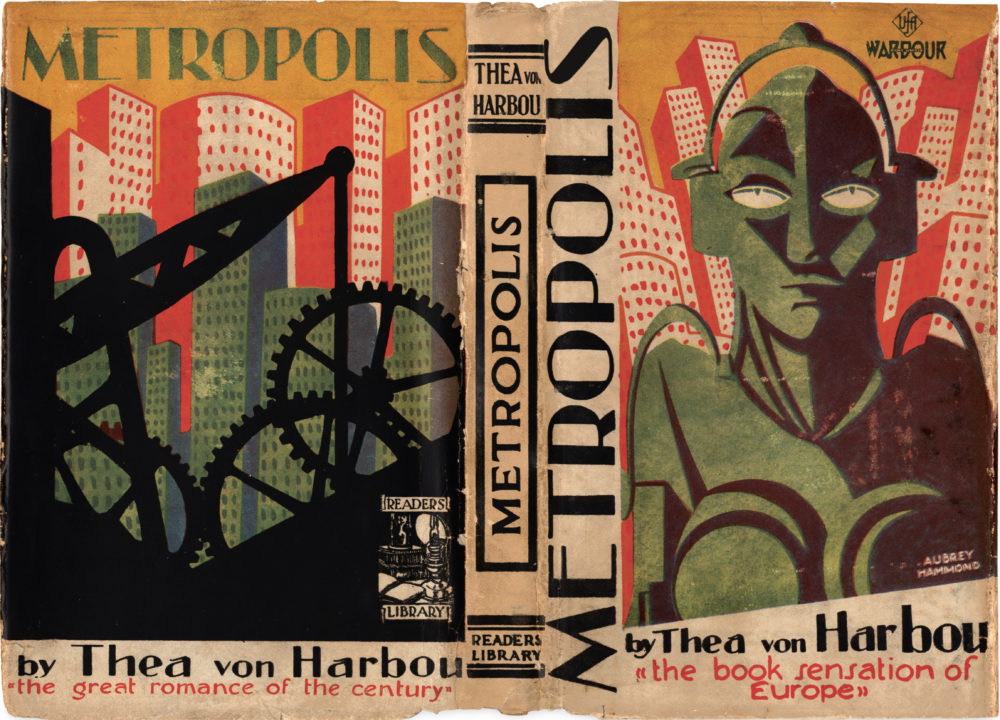
Aubrey Hammond, 1927.
One of the standout dust jackets of the twentieth century, Hammond’s design juxtaposes delicate color harmony with nightmarish vision.
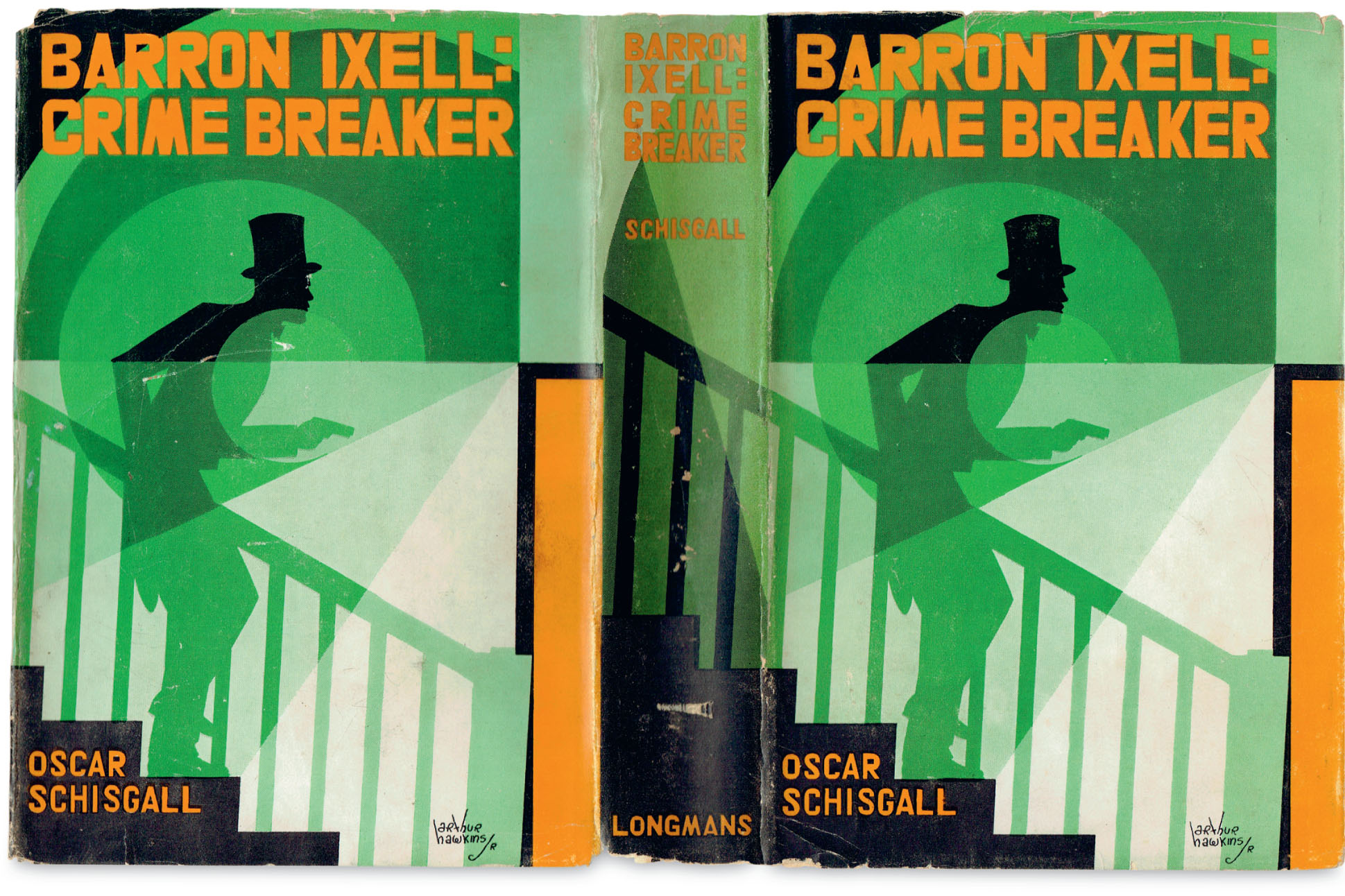
Arthur Hawkins Jr., 1929.
For this collection of stories featuring the intrepid international sleuth Barron Ixell, Arthur Hawkins’s highly theatrical design is repeated to create a full wraparound jacket.
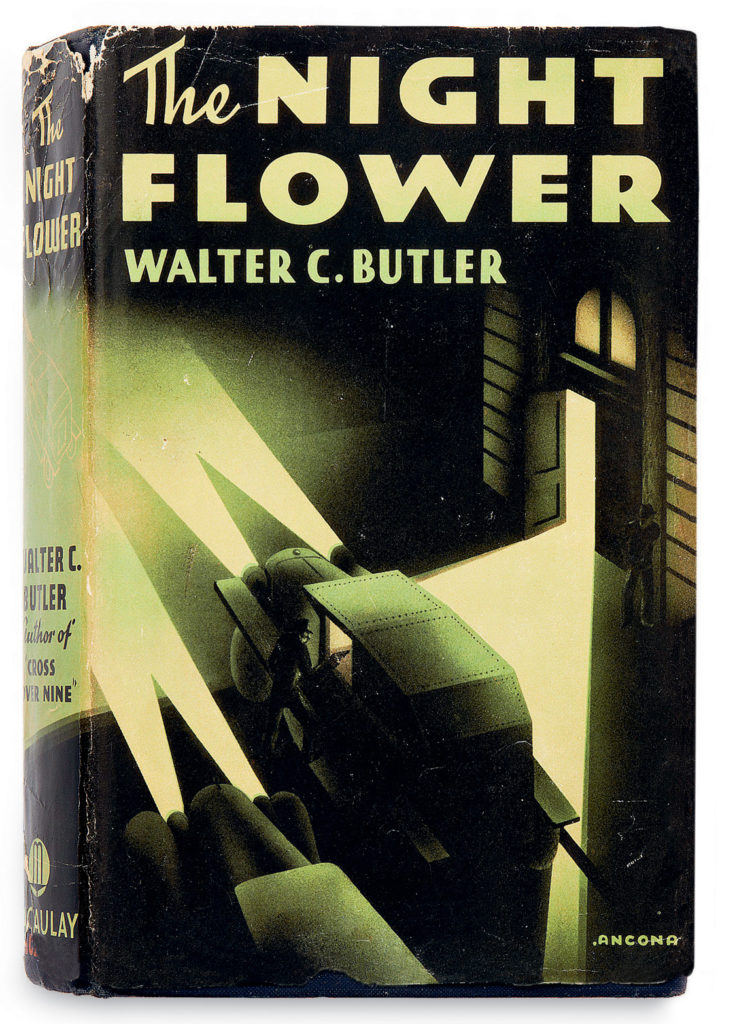
Ancona, 1936
The dramatic use of light and dark by Ancona (the nom d’artisteof Edward D’Ancona) immediately conveys that this is a mystery novel (one of only two written by Frederick Faust under this pseudonym) and echoes the film-noir genre of the period.
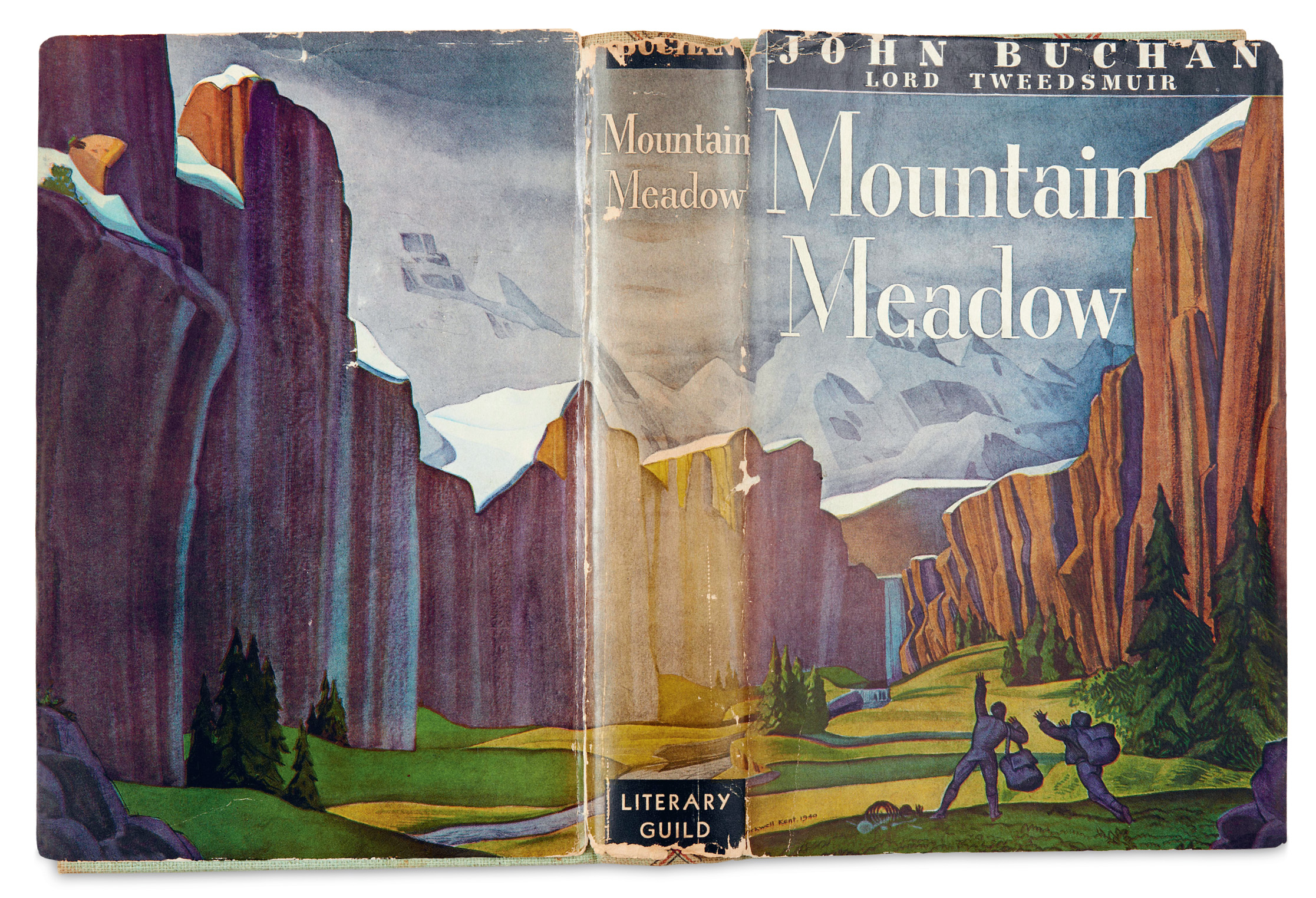
Rockwell Kent, 1941.
The artist’s lifelong preoccupation with the drama and beauty of landscape is given full rein in this spectacular wraparound design. The exaggerated, almost heroic, posing of the foreground figures suggests the influence of Soviet realism. John Buchan’s adventure story (published the year after his death) follows Sir Edward Leithen as he travels in the Canadian Arctic to investigate a man’s mysterious disappearance. No doubt Rockwell Kent’s own experiences in Alaska helped him to capture the feel of the novel’s locale. The jacket first appeared on the Houghton Mifflin (Boston) edition, published in the same year.
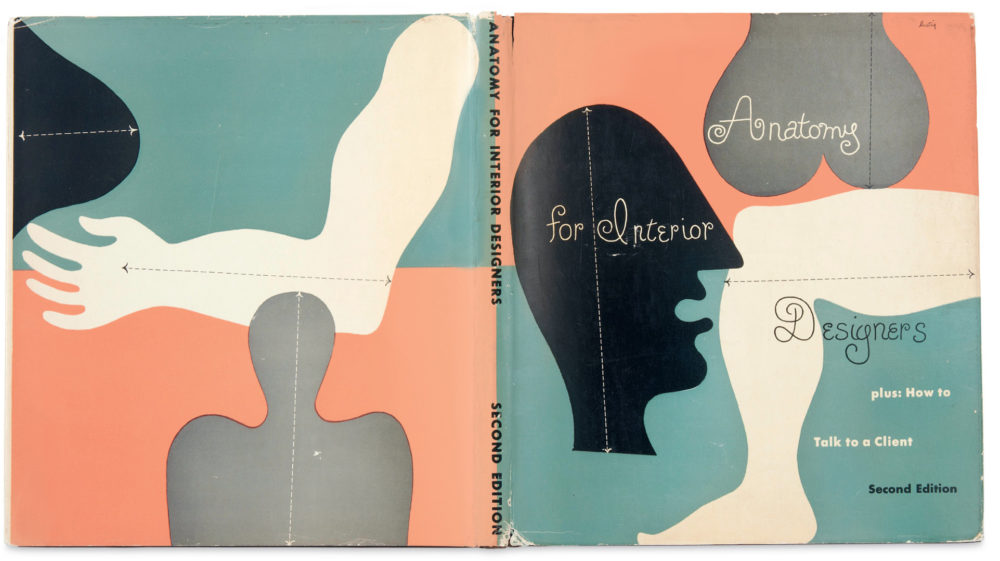
Alvin Lustig, 1948.
Alvin Lustig’s distinctive hand-rendered lettering was a key pictorial feature of the early editions of this striking jacket design. Sadly, in later editions, this was removed and replaced by a font—a rather ill-fitting Akzidenz-Grotesk Bold.

Barbara Jones, 1951.
Barbara Jones’s dust jacket for her own book is one of the most memorably idiosyncratic designs of the twentieth century. The existence of an early rough with the title English Vernacular Artsuggests some dialogue with the publisher.
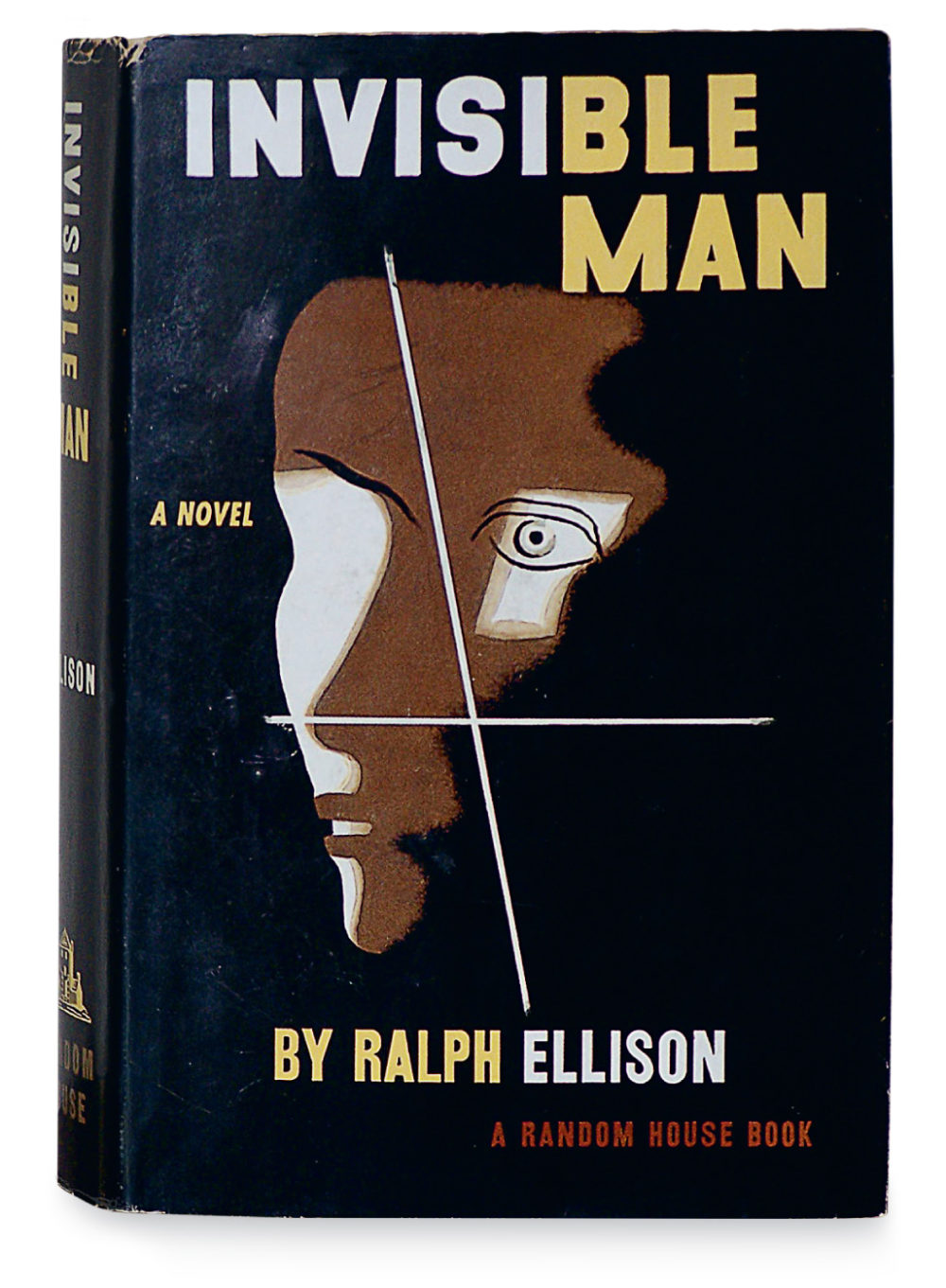
Edward McKnight Kauffer, 1952.
This is one of the most widely known of Edward McKnight Kauffer’s designs. For the novel, narrated by an unnamed black man, the jacket features a clever solution to the problem of how to make invisibility visible.
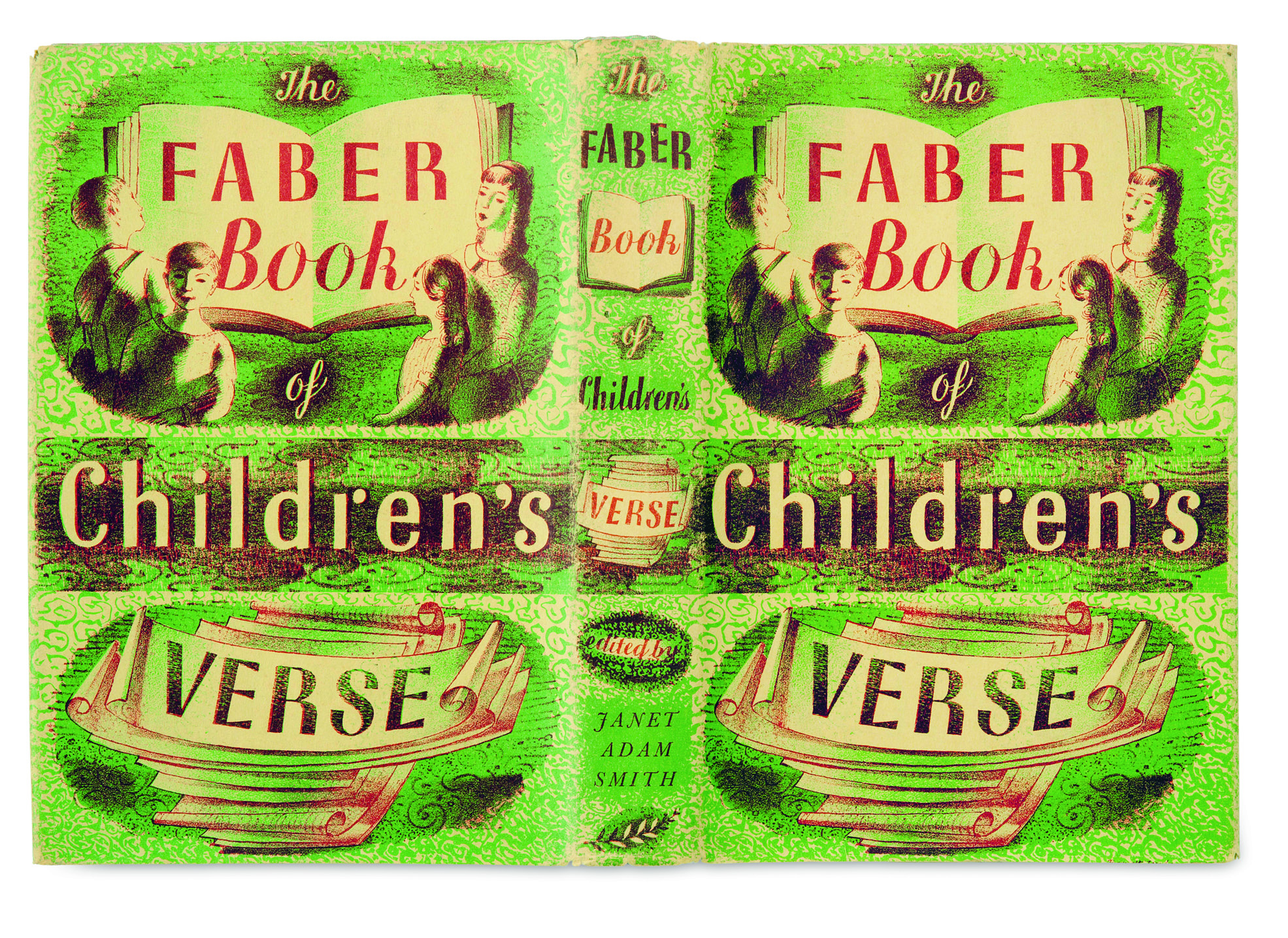
Barnett Freedman, 1953.
Many of Barnett Freedman’s book jackets were cleverly designed to repeat the front image on the back seamlessly. This example shows the artist at his best. The design is also repeated on the cover boards.
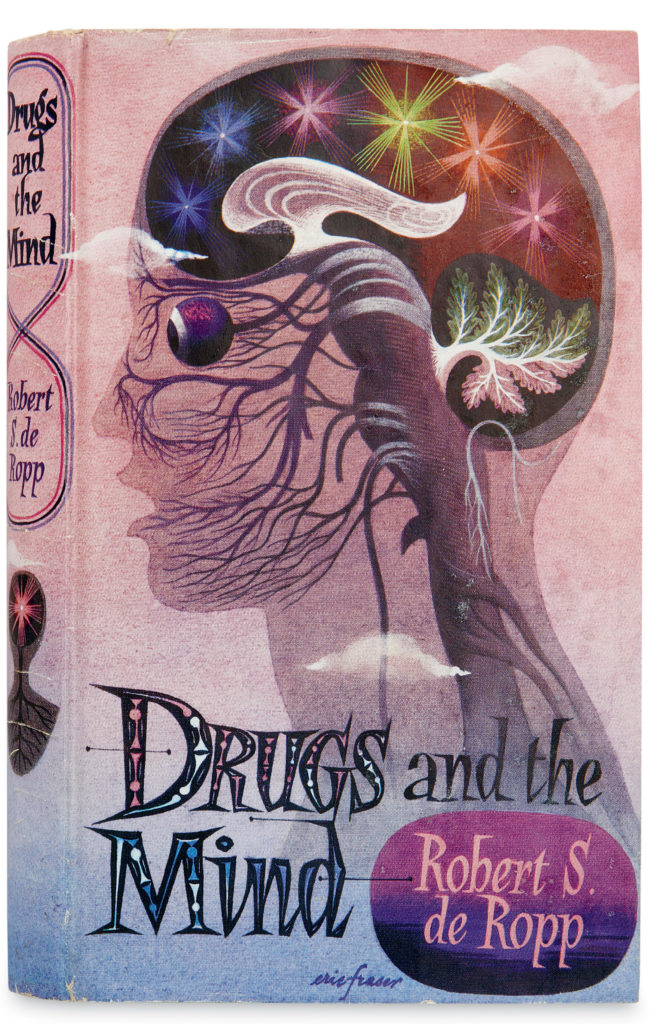
Eric Fraser, 1957.
The jacket is one of Eric Fraser’s most strikingly original designs. Dr. de Ropp’s first book introduced readers to the joys and mental tortures of ancient herbs and modern drugs.
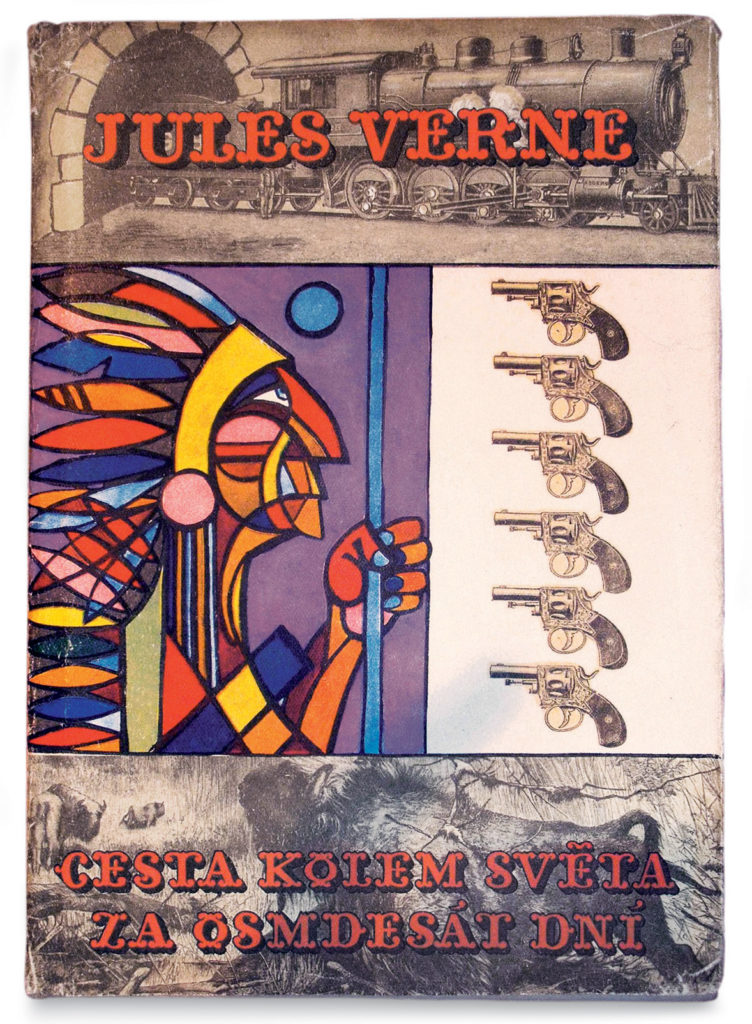
Adolf Hoffmeister, 1959.
Adolf Hoffmeister focuses on the American West in this design for Jules Verne’s classic. Using collage, he somehow manages successfully to balance imagery of widely differing graphic origin as well as the ornate type, which echoes the strong reds in the profile of the Native American.

Beth Krush, 1964.
Eudora Welty’s only book written specifically for children was illustrated throughout by Beth Krush, who also designed the jacket. The use of overprinting to maximize color separations and the cleverly integrated titles make this a particularly pleasing design.
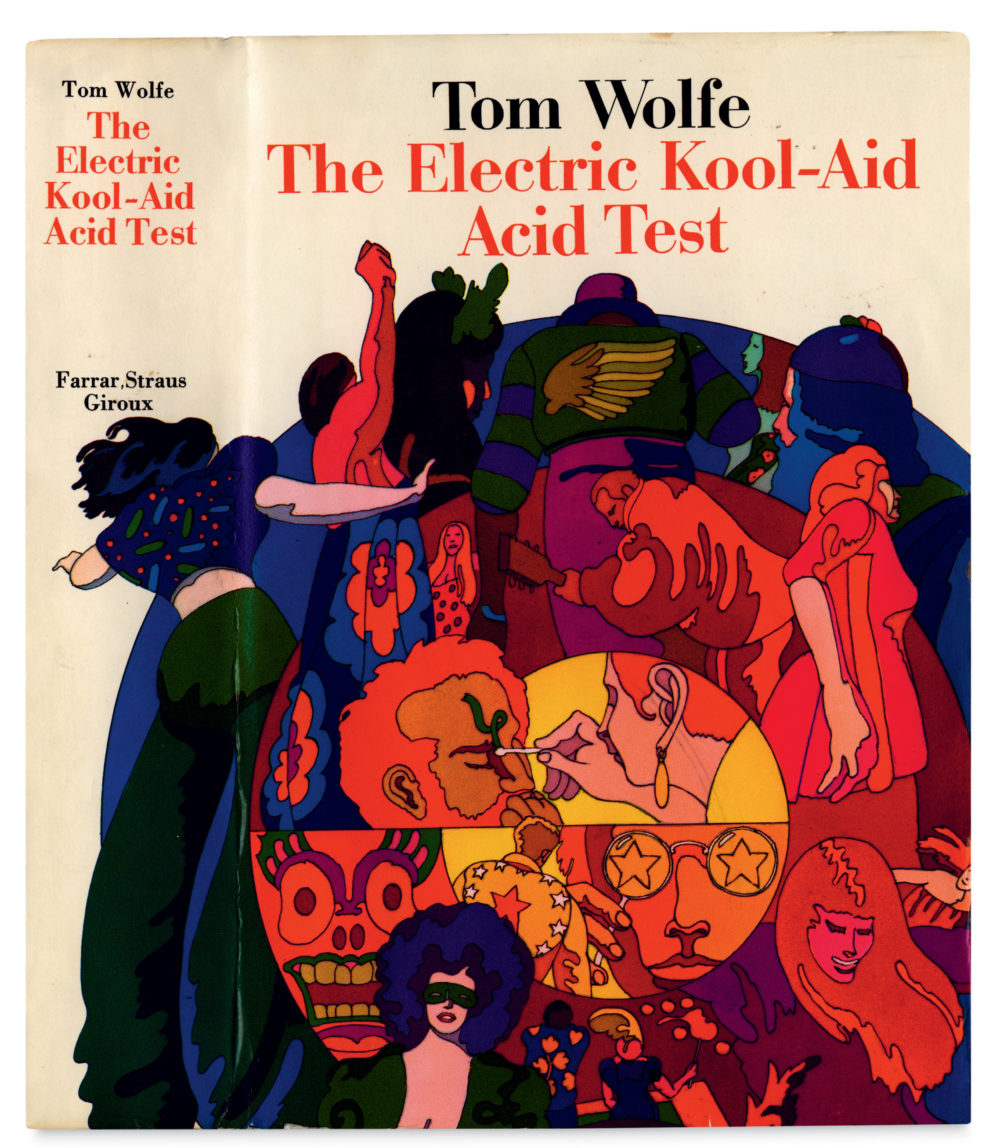
Milton Glaser, 1968.
It is difficult to imagine a more appropriate choice than Milton Glaser for the jacket design of Tom Wolfe’s account of late-sixties psychedelic-drug culture through the experiences of Ken Kesey and the Merry Pranksters.
Martin Salisbury is professor of illustration at Cambridge School of Art in Anglia Ruskin University.
All images excerpted from The Illustrated Dust Jacket, 1920–1970,by Martin Salisbury.
Search
Categories
Latest Posts
How to Squeeze the Most Out of Your iPhone's Battery
2025-06-26 12:34Wordle today: Here's the answer and hints for August 24
2025-06-26 11:43Bama rush TikToks are huge, but so are takedowns of sorority culture
2025-06-26 11:30Reddit rejects moderators' call for harsher measures against COVID
2025-06-26 11:14Best headphone deal: Take 22% off the Sonos Ace at Amazon
2025-06-26 11:01Popular Posts
Nintendo Switch 2 preorder just days away, per leak
2025-06-26 12:32Your Summer Reading, Sorted
2025-06-26 12:28How Does Weird Al Write His Songs?
2025-06-26 12:09Mary Shows Up
2025-06-26 10:54Featured Posts
Get the official Atari 7800+ Console for 50% off
2025-06-26 12:15The TikTok controversy over collecting human bones, explained
2025-06-26 11:52The Morning News Roundup for August 1, 2014
2025-06-26 11:47TikTok to display ads alongside search results
2025-06-26 11:27'Thunderbolts*' mid
2025-06-26 09:59Popular Articles
FreeSync 2 Explained
2025-06-26 11:55Apple AirPods Max owners report 'condensation death'
2025-06-26 11:41Wordle today: Here's the answer and hints for August 23
2025-06-26 10:50Wordle today: Here's the answer and hints for August 24
2025-06-26 10:24The Amazon Book Sale is coming April 23 through 28
2025-06-26 10:08Newsletter
Subscribe to our newsletter for the latest updates.
Comments (7392)
Inspiration Information Network
Samsung Unpacked stream is set for May 12, 2025
2025-06-26 11:57Impression Information Network
Taste It! by Dan Piepenbring
2025-06-26 11:41Universe Information Network
Meet TikTok's Spotify influencers
2025-06-26 11:31Transmission Information Network
OnlyFans alternatives that are sexually explicit, NSFW
2025-06-26 10:24Pursuit Information Network
NYT mini crossword answers for May 9, 2025
2025-06-26 09:56